Dear Bunker,
On this week’s newsletter we’re going to pick up where we left off last week and continue going through the brand building process.
If you haven’t read last week’s newsletter on “How To Build A Brand PT.1,” stop here and go back and read it, before reading about the next phase of the process. today, we’ll being over the following key concepts:
1) Perfect Customer
2) Brand Challenge
3) Brand Spark
4) Brand Promise
5) Brand KPI’s
6) Brand Guarantee.
***Warning: As a reminder, this newsletter is a meal, not a snack. Make sure you have out some pin and paper out to take notes!
Similar to last week, I’ll be using examples of my own company, IRONBOUND Media, when feasible. I know some of these are some high level concepts, especially if it’s your first time going through such an elaborate brand building branding process. That’s why I’m going to continue to use my ventures as the guinea pigs. Alright, lets get into it.
1) Identify Your Perfect Customer
A perfect customer is a client who loves you, pays your a premium for your products or services, and tells everyone how amazing you are. They’re the clients that make you enjoy being an entrepreneur, not the ones that make hate life. Perfect Customer Fit is far more important then product market fit, especially if you’re an early stage small business or startup, in need revenue consistent revenue. Once you identify your perfect customer, you can reverse engineer how to reach them and position your brand accordingly.
Of all the topics I’ve gone over, understanding who your perfect customer is one of the most important, only second to your company’s core.
Knowing your perfect customer is important because you’re not building a brand for everyone, you’re building for a specific person with a pain point you’re uniquely qualified to solve. I want you to think of your brand like a dog whistle and every-time you blow on it with a social media post, video, or podcast, ask yourself whose attention are you trying to attract?
For example, my perfect customer for IRONBOUND Media is 30-40 year old Service Academy graduate, running a growth stage small business, generating upwards of 1M+ a year in annual revenue, who needs help with his or her marketing and branding, and wants to work with someone they trust.
Now, let me breakdown why this is my perfect customer, and I want you to think what a breakdown would like for yours.
1) I have an unfair advantage with this target demographic, i.e I’m a 2010 graduate of the United States Naval Academy and have a national reputation due to my boxing and entrepreneurial accolades. People do business with those they like, know, and trust, and I already have a strong reputation in the community.
2) Service Academy graduates that are between the ages of 30-40 years are more open to new content ideas such as podcasting. They understand the importance of leveraging these news forms of media.
3) If there business is generating upwards of 1M+ a year, I can assume they have enough cash flow to afford our premium podcast production services. If I want to niche down even more, I could focus on professionals service firms, with low over head, a good margins.
4) I know what professional organizations they’re apart of and where to find them. I also know what newsletters they’re subscribed to, what other content they consume, etc.
Notice as I did my breakdown, I identified my unfair advantages, why would they be willing to work with me, whether or not they they could afford to, and how I reach them. Once you have all this figured out with your perfect customer, you can start to position your brand to attract their attention. An easy place to start is with a one-liner. Using IRONBOUND Media as an example again, a potential one-liner could be:
“We help Service Academy graduates running growth stage small businesses, create, distribute, and grow, branded podcasts to engage with their perfect customer.”
Although I don’t have this up on my website yet, I do plan on undergoing a rebrand which caters to a more veteran friendly audience. Either way, even if you don’t have this front a center, the idea is that when a service academy graduate comes across my brand, they know it’s for them.
I’ll continue to discuss perfect customer in upcoming newsletters, but for now, use the above as a good starting point.
2) Brand Challenge
Your brand challenge is a call to action mean to get your perfect customer to take action. It’s short and inspirational, think Nike’s, “Just Do It.”
3) Brand Spark
Your brand spark is a word or phrase that people associate with your brand. It’s the slogan on your apparel, laptop stickers, and any other branded items. For IRONBOUND Media, our slogan is “Podcast Like A Platinum Album,” although I’ll probably update it here soon. IRONBOUND Boxing’s slogan is “More Than Boxing.” Below is an example of a local streetwear brand in Newark called The Nork Project, whose known for their slogan “Newark is for Hustlers.”
4) Brand Promise
Your brand promise is used to build trust with your clients. It’s the experience they can expect when they work with your brand. For example, If you have a Consumer Packaged Goods company, below are some examples of a brand promise:
You’ll receive your order in 7 days or less.
We respond to emails and customer support questions in less than 24 hours.
Our product is made with the highest quality of ingredients.
For the sake of simplicity, I recommend keeping them to no more than 3. Here’s an example of Starbucks.
5) Kept Promise Indicators (KPI)’s
Your Brand KPI’s are used to measure internally whether or not your keeping up with your brand promises. Below are some KPI’s based on our examples above:
All orders are shipped within 48 hours with the exception of Federal holidays.
The customer service email account and voicemail are cleared to zero at the end of each day.
We maintain a vendor list of at least 10+ local farmers at any given time.
6) Brand Guarantee
Last but not least, your brand guarantee is where you take all the risk off of the table. An example is offering a refund if your products or services don’t deliver the value that was promised. Imagine a skeptical prospect visiting your website. They’re a bit hesitant to place an order, but once they read your brand promises, they’re no longer worried and agree to place an order.
Depending on where you are in your entrepreneurial journey, you may be unable to offer a full refund, but the idea still stands that you want your “perfect customer” to walk away with a good experience.
If you’re a CPG company and are resistant to issue a full refund to customer, maybe they can place another order or apply their credits to another product. Feel free to get creative but keep your perfect customer and your brands longevity in mind. The same applies for service based businesses.
Now that you know all the key concepts to building a brand, the next step is go through the entire process with your own venture, and began implementing them.
An easy place to start is with your website. Your website is such an external facing asset, that I encourage you to begin there. Next, start updating your marketing copy include sales deck, social media post, etc. Lastly, as your start to produce content, whether videos, podcast, or blog post, start writing and talking about your core values, bold beliefs, etc.
Don’t go through such an elaborate brand building process, only to leverage the information internally, with employees or other team members.
You’ll know you’re on the right path when clients or prospects began to internalize your brand, and adopts your brands language in casual conversations. At IRONBOUND Media, one of our bold beliefs is that, “there are no rules in audio.” I recently heard a client of mine, state that very phrase on a podcasts. I couldn’t have be more proud because I know my branding was resonating with him.
I hope this brand process was helpful and I’m confident that if you take the time to go through it and apply it in your venture, you want regret it. As a reminder, if you find yourself stuck or need another reference, feel listen to make my podcast episode of the Transition, “How To Build A Brand,” where I go over everything covered in the last two newsletters.
Let me know your thoughts on the last two newsletters by shooting me a text at 832-284-2045 or email at Mike@weareironbound.com, I’d love to hear from you.
Brand Building Resources:
The Lions Pride: https://www.thelionspride.com/
Traction: Get a Grip on Your Business by Gino Wickman
Building a StoryBrand: Clarify Your Message So Customers Will Listen by Donald Miller





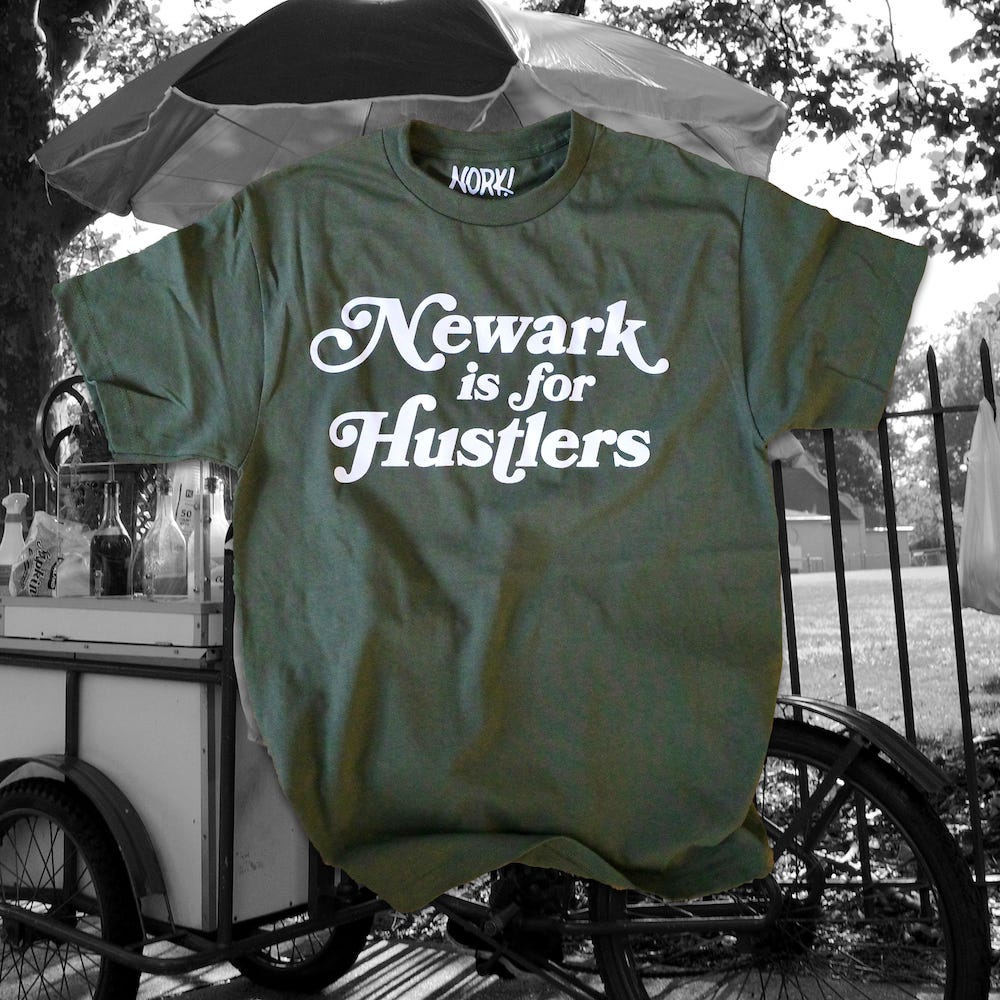
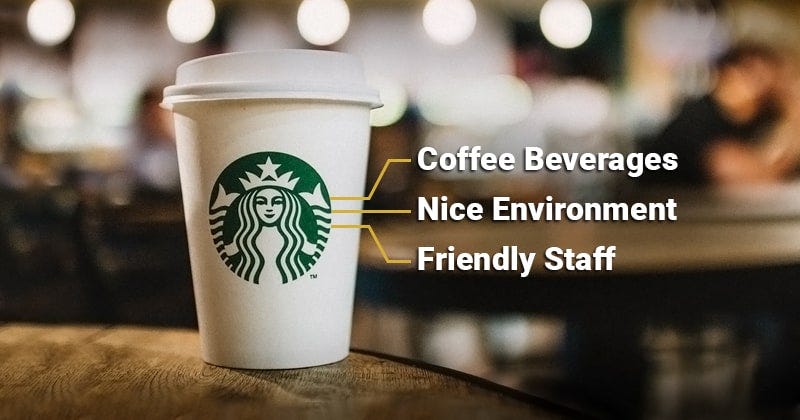
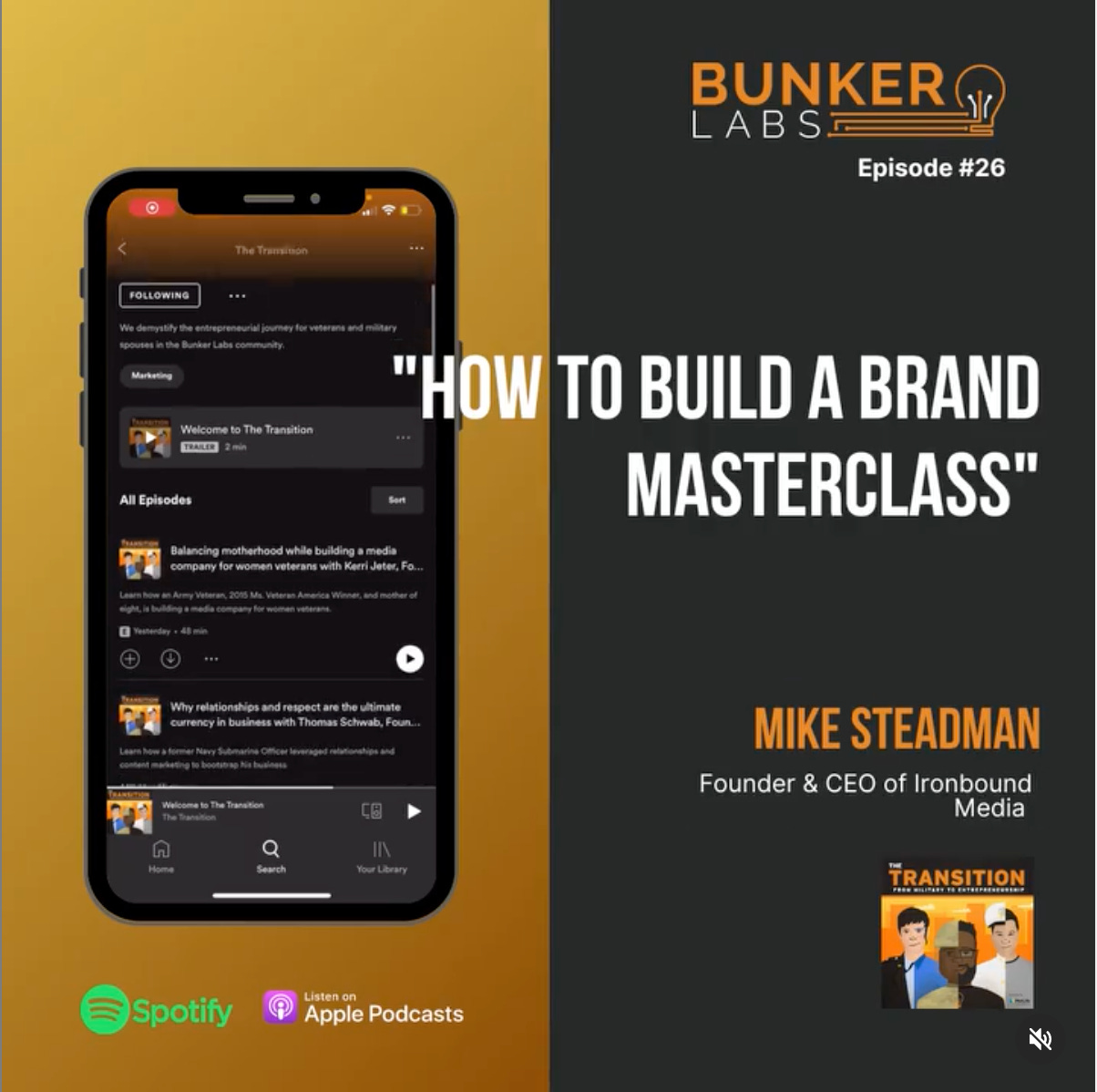



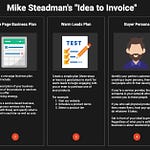

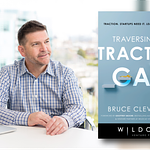
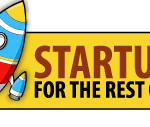
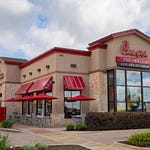


How-To Build A Brand PT.2: